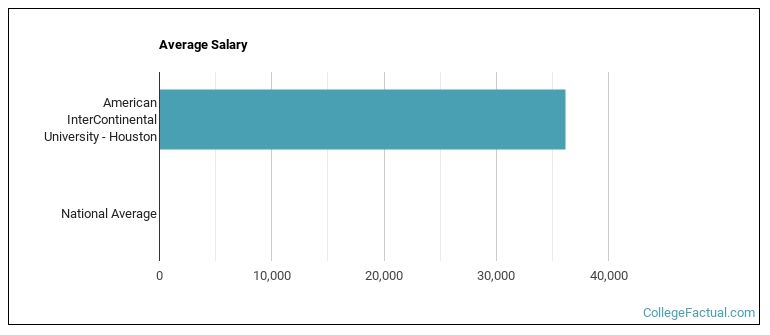 by our College Data Analytics Team
by our College Data Analytics TeamCollege Factual analyzes over 2,000 colleges and universities in its annual rankings and ranks them in a variety of ways, including most diverse, best overall quality, best for non-traditional students, and much more.
American InterContinental University - Houston was awarded 2 badges in the 2025 rankings. The highest ranked major at the school is business, management & marketing.
Explore the best ranked schools for the programs you are most interested in.
AIU Houston was not ranked in College Factual's Best Overall Colleges report this year. This may be because not enough data was available.
See all of the rankings for American InterContinental University - Houston.
Returning adults and other non-traditional students may appreciate the fact that American InterContinental University - Houston has an open admissions policy. This means that you'll only have to submit basic materials, which may include proof that you completed high school or an equivalent program.
The student to faculty ratio at AIU Houston is an impressive 12 to 1. That's quite good when you compare it to the national average of 15 to 1. This is a good sign that students at the school will have more opportunities for one-on-one interactions with their professors.
The freshmen retention rate tells us what percentage of first-year, full-time students choose to continue on to their sophomore year at a particular school. The rate at American InterContinental University - Houston is 67%, which is about average when compared to the national rate of 68%.
Students are considered to have graduated on time if they finish their studies within four years. At AIU Houston the on-time graduation rate of first-time, full-time students is 47%. That is great when compared to the national average of 33.3%
During the 2017-2018 academic year, there were 190 undergraduates at AIU Houston with 143 being full-time and 47 being part-time.
The net price is calculated by adding tuition, room, board and other costs and subtracting financial aid.Note that the net price is typically less than the published for a school. For more information on the sticker price of AIU Houston, see our tuition and fees and room and board pages.
It's not uncommon for college students to take out loans to pay for school. In fact, almost 66% of students nationwide depend at least partially on loans. At AIU Houston, approximately 90% of students took out student loans averaging $7,032 a year. That adds up to $28,128 over four years for those students.
Get more details about paying for American InterContinental University - Houston.

See which majors at American InterContinental University - Houston make the most money.
Get more details about the location of American InterContinental University - Houston.

Contact details for AIU Houston are given below.
| Contact Details | |
|---|---|
| Address: | 9999 Richmond Avenue, Houston, TX 77042 |
| Phone: | 832-201-3600 |
| Website: | www.aiuniv.edu/online-campus/campus-locations/houston |
| Most Popular Majors | Bachelor’s Degrees | Average Salary of Graduates |
|---|---|---|
| Business Administration & Management | 52 | $43,528 |
| Computer Information Systems | 21 | $51,687 |
| Criminal Justice & Corrections | 18 | $35,862 |
| Health & Medical Administrative Services | 4 | $40,754 |
| Music | 4 | NA |
| Accounting | 0 | $46,628 |
Online learning is becoming popular at even the oldest colleges and universities in the United States. Not only are online classes great for returning adults with busy schedules, they are also frequented by a growing number of traditional students.
In 2022-2023, 102 students took at least one online class at American InterContinental University - Houston. This is a decrease from the 142 students who took online classes the previous year.
| Year | Took at Least One Online Class | Took All Classes Online |
|---|---|---|
| 2022-2023 | 102 | 28 |
| 2021-2022 | 142 | 49 |
| 2020-2021 | 176 | 58 |
| 2018-2019 | 175 | 53 |
Learn more about online learning at American InterContinental University - Houston.
Footnotes
*The racial-ethnic minorities count is calculated by taking the total number of students and subtracting white students, international students, and students whose race/ethnicity was unknown. This number is then divided by the total number of students at the school to obtain the racial-ethnic minorities percentage.
References
More about our data sources and methodologies.